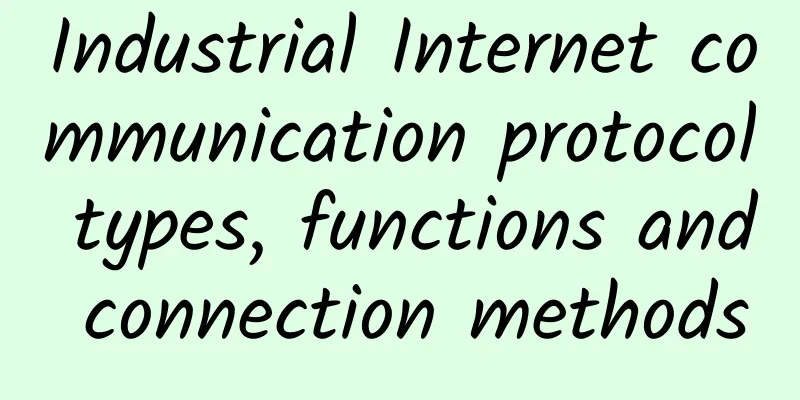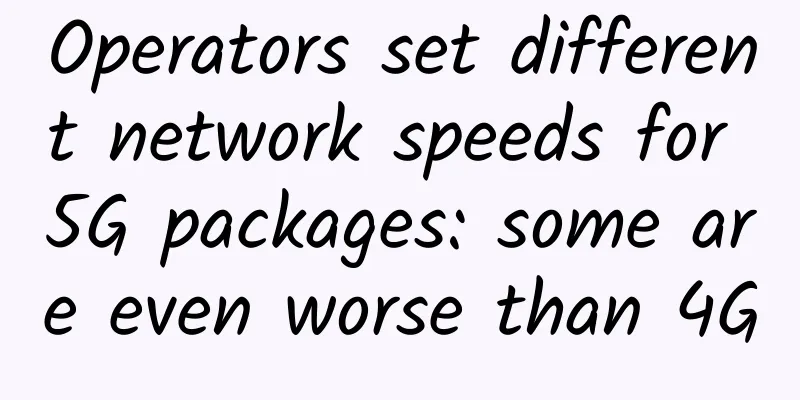Industrial Internet communication protocol types, functions and connection methods

|
With the advent of Industry 4.0, the Industrial Internet has become an important support for the transformation and upgrading of the manufacturing industry. The Industrial Internet connects various devices, systems and services to achieve real-time data collection, analysis and optimization, thereby improving production efficiency, reducing costs, and improving product quality and innovation capabilities. In this process, communication protocols, as the cornerstone of the Industrial Internet, play a vital role. This article will introduce the types, functions and connection methods of the Industrial Internet communication protocols in detail. 1. Industrial Internet Communication Protocol TypesWired communication protocolWired communication protocols mainly include Ethernet, industrial Ethernet, fieldbus, etc. These protocols have advantages in data transmission speed, stability and anti-interference ability, and are suitable for scenarios with high requirements for real-time and reliability.
Wireless communication protocolWireless communication protocols mainly include Wi-Fi, Bluetooth, ZigBee, LoRa, etc. These protocols have advantages in connection flexibility and installation convenience, and are suitable for scenarios that are sensitive to wiring costs and space constraints.
2. Industrial Internet Communication Protocol Function
3. Industrial Internet Communication Protocol Connection Method
4. Development Trend of Industrial Internet Communication ProtocolAs the Industrial Internet continues to develop, communication protocols are also evolving and innovating. The following are some development trends of Industrial Internet communication protocols:
|
>>: After 6G, will there be 7G and 8G?
Recommend
API Gateway Selection: I use OpenResty!
Today I want to talk to you about the topic of ga...
Lessons from data center outages: Focus on infrastructure
The majority of downtime incidents over the past ...
Policies are hot, but enterprises are cold. Industrial Internet is a trend in the long run, but it is still a tough nut to crack at present.
In the post-epidemic era, the domestic epidemic h...
Completely free! Increase your broadband speed by 500M in one second
If you are a telecom broadband user, then you mus...
Emerging technology trends to watch in 2023
As the world of technology continues to evolve, i...
spinservers: $99/month-E3-1280v5/32GB/1TB NVMe/1Gbps unlimited traffic/Dallas data center
spinservers has a large stock of 1Gbps unlimited ...
Huawei and its medical industry partners promote 5G smart medical integration cooperation
In order to further respond to the national new i...
The beauty of 5G phone is like being in your ear
[[352290]] This article is reprinted from the WeC...
"2021 Application Strategy Status" released, F5 continues to build aware, controllable, and on-demand applications
[51CTO.com original article] In the past year, af...
Is 4G still better? China Mobile suddenly admitted: 50 million 5G users do not use 5G network
At the 2021 Mobile World Congress, Liu Liehong, V...
New infrastructure has boosted the multi-billion-dollar 5G optical module market, and the high-end sector urgently needs to increase the domestic production rate
2020 is a big year for 5G capital expenditure. Be...
5G innovation promotes green and low-carbon development
Energy conservation is the key support for achiev...
Chinese giants retreat overseas
A withdrawal movement from Chinese giants is unde...
RAKsmart San Jose high-defense servers start from $79/month, Japan/Korea servers start from $79/month
Yesterday we shared the RAKsmart New Year's b...
HTTP 2.0 protocol interview questions that will make the interviewer tremble
Http protocol is easy to use for programmers with...









